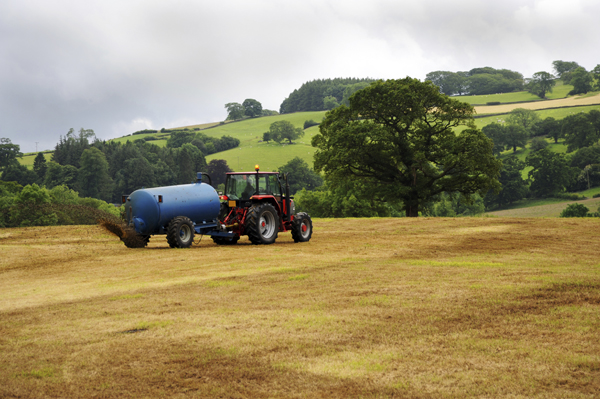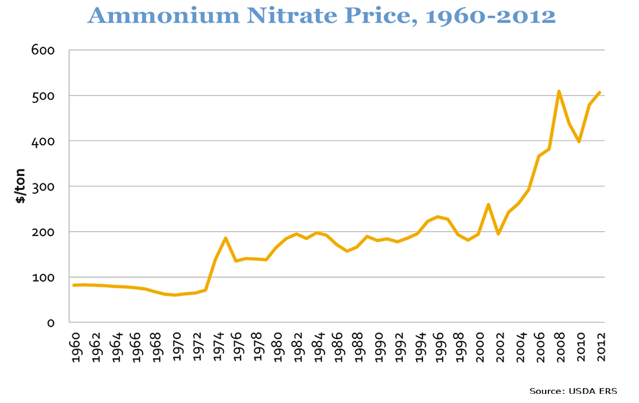The production of organic fertilizers from animal droppings allows farms to transform a waste product that is otherwise difficult to treat into a source of self-sufficiency and revenue.
Soil fertilization began when early farmers realised that the yield from previously productive soils became unacceptable when used continuously, and that adding manure or vegetable waste maintained its fertility much better.
The significant growth in the world population over the last two centuries, from 1,000 million in the early nineteenth century to 7,400 million today, requires an increase in agricultural production. As the scope for greatly increasing cultivated areas is limited, the only option for increasing agricultural production is to replenish the soil with the nutrients consumed by crops. The rational use of fertilisers is essential for maintaining crop quality and yields, while fully respecting the environment.
The use of mineral fertilizers is an efficient way to meet the high worldwide demand for the nutrients required by the soil. Long-term testing has shown these fertilisers help to produce high crop yields along with higher quality products.
Conventional mineral fertilizer production is based on the use of natural gas, rock phosphate, potash, sulphur and other commodities, whose prices have gone up considerably in the last ten years. This situation shows no sign of improving, with resources limited and increasingly scarce. Thus the rising price of mineral fertilizers is something which shown no signs of ending anytime soon.
The graph below shows the price of ammonium nitrate between 1960 and 2012, and an extraordinary rise from 2002 can be seen. This increasing trend in the price of ammonium nitrate is seen for all mineral fertilizers, which currently stands between €100 and €600 per ton, depending on their composition.
However, there is an environmentally sustainable and economically viable alternative for the production of organic fertilizers from fossil waste: industrial waste or by-products can be recycled and processed into fertilizers. A particularly attractive option for these recovered fertilisers is the solid and liquid fraction from biodigesters (known by the term digestate), which use poultry manure and pig and cattle slurry. The current – and especially the future – cost of fertilizers enables investment in these recycling processes, whose final product is a fertiliser of high added value at attractive returns on investment.
Recovery processes that typically provide products which can be used as fertilizers are limited to the field of digestate processing. This is obtained from the anaerobic digestion of organic waste, in a product with levels of nitrogen, phosphorus and potassium that make it suitable for use in agriculture. The digestate is rich in soluble organic matter, nitrogen, phosphorus and potassium, but at a relatively low concentration (less than 0.5%); thus, it is expensive to distribute to its destinations and apply to the soil. To provide commercially viable concentrations of these nutrients, a water evaporation process is required, which in turn requires thermal energy at low cost to make the process profitable. This energy is available in the waste-to-energy process through the use of the biogas produced in digesters, with or without cogeneration engines. Thus, it is virtually free to provide hot water (at about 90°C), which is used in multiple effect vacuum evaporators to achieve nutrient concentrations of about 35% as dry matter. This concentrated product can then be packaged and sold in bulk, providing a good income for farms with this technology. One of the added benefits of this concentrated fertilizer, made from the liquid digestate fraction of cattle manure, is that it is an “organic and natural” product, with all pathogenic microorganisms, antibiotics and hormones removed, thanks to the long retention period in the digester.
The essential element needed by crops is nitrogen, preferably as nitrate and partially in the form of ammonium, phosphorus, potassium, calcium, magnesium and sulphur, along with a series of micro-nutrients (e.g. iron, manganese, zinc, copper, molybdenum and boron). However, soluble carbon, in the form of humic substances (fulvic acid and humic acid), plays a critical role in the uptake and processing of these nutrients by the plant material. One of the aspects that most worries the farmer is the possible presence of pathogenic microorganisms, which are typical in manure.
Indirect re-contamination of the liquid fraction in digesters can be a problem; however this can be removed by the long residence times in the digester and the technology applied in the concentration process. The latter includes the use of ultrafiltration membranes (which remove all types of pathogens, bacteria, viruses and even pyrogens) and the thermal shock received during the concentration process with the evaporators that sterilise the fertiliser product obtained.
The mineral nutrient recovery process depends primarily on the composition of the starting industrial by-product. In general, it is based on the use of a series of processes and techniques that separate the main compounds of interest (ammonium nitrate, superphosphate Ca(H2PO4)2, ammonium phosphate, potassium chloride, potassium sulphate, calcium sulphate, calcium chloride, magnesium sulphate, calcium carbonate, etc.), followed by vacuum evaporation stages and crystallisation, to prepare the compounds in a solid state and with high purity.
Thus, high value-added fertilizers (i.e. balanced in their composition, having slow release, defined properties, specific to each application) can be produced via a completely environmentally sustainable process at relatively low cost. The organic fertilizer concentrate obtained (about 35% dry matter) can have a market value of between €250-350/ton. There are operating costs of around 30% of the market value of the product; however, the costs of concentration are offset by the available heat energy (e.g. electricity and consumables). Thus, the profit obtained allows for a very rapid payback of the investment, in usually less than two years.
Visit manurtech.com to learn more about our solution for the production of organic fertilizers and energy from animal manure.


